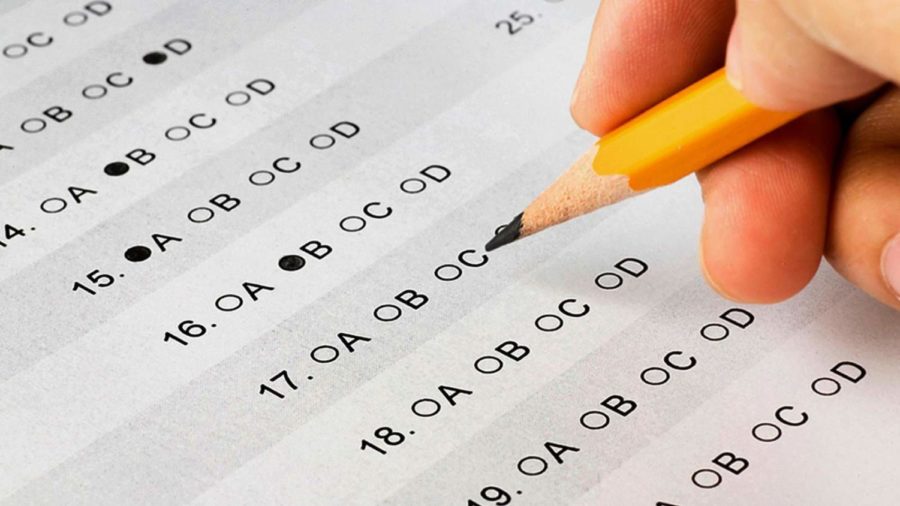Make Test Optional Mandatory
Colleges decide if they should remove SAT testing requirements.
With the Boston Latin School hosted SAT coming up on March 24, juniors scramble to prepare for the exam. Through taking and retaking practice tests, they learn how to identify different SAT questions, pick up new methods of problem-solving, and develop a suitable pace for completing the assessment within the given time limit. Despite such rapid preparation on the part of students, however, many colleges are becoming test-optional, meaning that submitting test scores will no longer be required in the application process. This controversial decision begs the question of whether this route is essential for all colleges. If secondary education establishments hope to foster a more inclusive environment, all American colleges should become test-optional.
Fundamentally, exams such as the SAT fail to accurately measure a student’s full range of abilities. Students who prepare to take the SAT do not study the regular course material from their schools, but rather focus on the types of questions specific to the exam. As a result, students do not learn the material; they are simply learning the exam. This is because the SAT is structured in a specific format, in which students are conditioned to aim for a high score rather than fully demonstrate their knowledge.
Additionally, there are some students who crack under pressure during exams or become anxious about time constraints. While they are not any less intelligent than those who perform well under pressure, tests such as the SAT do not account for these students.
Director of Guidance Ms. Megan Clougherty explains, “There are things that the SAT doesn’t measure. […] Skills like resilience, endurance and grit […] cannot easily be captured by a standardized test and are just as strong indicators of a person’s success.”
While academics should certainly play a role in college admissions, a student’s value should not be so heavily determined by a singular test score, given each individual’s complexity and unique qualities. The decision to make colleges test-optional will be an important step in accounting for this.
Defenders of standardized tests in college admissions claim that they allow universities to compare a vast amount of applicants using one common exam. However, such exams have been shown to be discriminatory, favoring wealthy White Americans, most of whom possess the resources to purchase practice material and enroll their children in tutoring programs.
With so much educational inequality in America, many low-income and Black, Indigenous and people of color (BIPOC) students do not have access to the same resources that their White counterparts do in SAT preparation, putting them at a disadvantage for achieving a high score.
The SAT was not designed with low-income students in mind and has been structured around privileged Americans. As Alicia Yu (I) explains, “Racial and class gaps are intertwined […] [and] these types of exams are biased towards those who can easily afford quality test tutoring and resources, and against those who cannot buy, find or make time for quality test prep.”
According to College Board’s 2019 report, 55 percent of Asian American students and 45 percent of White students scored a 1200 or higher on the SAT, yet only 12 percent of Hispanic students and nine percent of Black students reached that threshold. It is evident that the SAT structure favors certain groups of students over others — colleges permanently becoming test-optional will provide low-income students with access to a wider range of universities, many of which may currently overlook their application because of the undesirable SAT score.
Additionally, in light of the COVID-19 pandemic, it is even more crucial that higher education establishments become test-optional. In 2020, the SAT was mostly administered in suburban areas, where schools were able to open. In contrast, the SAT was not able to be administered in urban areas, where the pandemic had the greatest impact on low-income, BIPOC populations. As a result, only those with the ability to earn a slot, transport themselves and risk their health were the ones able to take the SAT in the suburbs, once again demonstrating the inequity of the exam.
Each student at BLS has the privilege of taking the SAT — and most do well — but outside of our exam school’s walls, many students are overlooked by these tests. As students scramble to prepare for the SAT, it is important to acknowledge the issues present within the current system. Admittedly, all American colleges becoming test-optional will require changes in college admissions: rather than prioritizing standardized test scores, colleges will have to place more significance on a student’s academic history, personal essays and demonstrated passions. This, however, is a necessary step towards equity.







